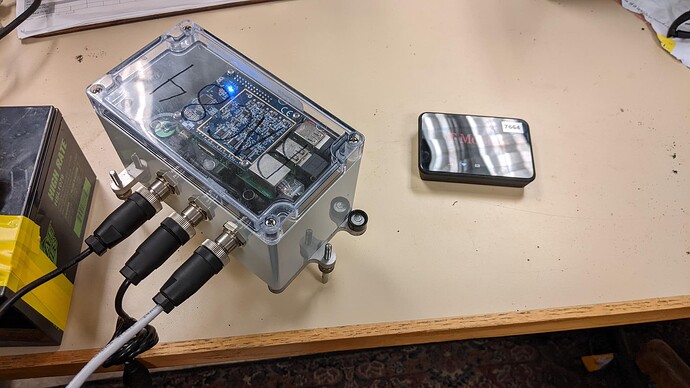Hello,
I have been experimenting with using the Raspberry Shake 3D for portable, rapid deployments, primarily with HVSR in mind using ambient noise. These are often in remote areas where even cell signal cannot be guaranteed. For this reason, we are using the USB GPS solution, and that has been working just fine. I will probably update here once I get everything going smoothly ![]() but we have collected and processed data and it appears to work well.
but we have collected and processed data and it appears to work well.
Because we are in the field with rapid deployments (less than an hour at each site), it is a (admittedly minor) pain to connect the ethernet cable for each deployment and then connect (usually via rs.local in the browser) to a computer each time we need to end acquisition at the site.
The first way I thought that might help make this slightly quicker/easier would be to use a tablet or mobile phone to connect directly through a USB otg ethernet adapter, but connecting via ethernet to a mobile device has not worked for me yet (see here).
My second thought was to use a hotspot, then a tablet could be used (this hotspot won’t necessarily be connected to the internet, it is just to create a local network that both a tablet and the Shake can both on so that I can use the tablet to connect to https://rs.local to shutdown the Shake before turning off power). This also has the added benefit of allowing us to turn off the instrument without disturbing it so we don’t get any weird noise spikes at the end of the site’s data. This has worked fine, but I have only been testing with the wifi onboard the Raspberry Pi. Per the warning box here, the built-in adapter is not recommended:
We do not recommend using the built-in Raspberry Shake 3 Model B’s wifi, but it is available. Be aware that using the built-in Wifi (as opposed to Ethernet or Wifi from a USB adapter) will introduce high amplitude RF noise into the Raspberry Shake, often seriously compromising the seismic signal by introducing high amplitude low-frequency spikes. This appears to be a result of the proximity of the Wifi antenna to the Raspberry Shake board itself. External/ USB wifi solutions are not as problematic because the wifi antenna is further from the Raspberry Shake board.
However, since we are remote and are using GPS, even if I get a USB adapter, I am worried about affecting our timing, per this other warning box here:
If you are using the GPS USB solution, other USB port(s) should remain unused. The reason: The Raspberry Pi is most likely using a common buffer for all USB ports, this is standard. So, to avoid any competition created when reading from more than one port, which can cause the PPS to fluctuate, only the GPS antenna should be connected. If you connect other devices, we cannot guarantee that the timing will remain within the advertised specifications.
I saw here that the timing may not be an issue even if an external usb device (like a wifi dongle) is used and this last warning was just to be safe:
I wrote that warning to be on the safe-side. You are probably OK, but this would require you to “test and see”. My recommendation, however, is not to use the GPS antenna. If you have an Internet connection, then you will get the same timing quality using the standard mode of operation (NTP) as you would with GPS. If you are interested you can read more about why here .
I have not purchased a dongle yet. My main question, I suppose, is about timing. Since this is just a single instrument and I am not worried about correlation with any events for HVSR purposes, the main thing is that the timing needs to be internally consistent (across each channel) and accurate (a second needs to be a second for the entire site, even if it is off UTC by a second). Is the shake timing internally consistent with USB GPS timing if another USB port is being used? (also, does it make a difference if multiple usb ports are being used, for example, one for wifi and one for increasing the data storage capacity?)
My question may already be answered by that link/comment to the GPS with 4G forum question, but I just wanted to make sure before I go through with a wifi dongle purchase.
Additionally, if I am being too careful by ensuring that the Shake is shutdown via rs.local before powering down, that would be helpful to know…but that seems important. I suppose it would be nice if there was button or something that could be programmed to run the shutdown command (whatever that is) so an external machine (tablet, computer, phone, etc.) would not have to enter the picture just to turn it off.
Riley
